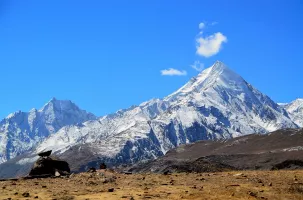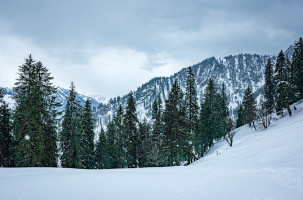Kidron Valley Travel Guide
The Kidron Valley, located in Jerusalem, is a historically and culturally significant destination in Israel. This valley holds immense religious importance, as it is mentioned in the Bible and is believed to be the final resting place of souls on Judgment Day. Surrounded by ancient tombs and historic sites, the Kidron Valley offers visitors a glimpse into the rich history of the region. The valley's geography, with its rugged terrain and lush vegetation, adds to its allure as a must-visit destination in Israel.Top Attractions in Kidron Valley
- Absalom's Pillar
- Tomb of Zechariah
- Gethsemane Garden
- Mary's Tomb
- Silwan Necropolis
Kidron Valley is Famous for
Its ancient tombs and religious significance.Top Attractions in Kidron Valley
- Exploring ancient tombs
- Visiting religious sites
- Enjoying the scenic views
- Learning about the history of the region
- Walking through the Gethsemane Garden
What's Great about Travelling to Kidron Valley?
- Rich historical and cultural experiences
- Spiritual significance for religious travelers
- Breathtaking views of the surrounding landscape
What's Not So Great about Travelling to Kidron Valley?
- Limited dining and accommodation options
- Rugged terrain may not be suitable for all travelers
- Hot weather during summers
Travel Tips for Kidron Valley
- Check visa requirements before traveling
- Wear comfortable walking shoes for exploring the valley
- Respect local customs and traditions
Important Kidron Valley trip information
- Ideal Duration: 1-2 days
- Best Time to Visit: Spring and Autumn
- Nearby Airports and Railway Stations: Ben Gurion International Airport and Jerusalem Railway Station
Per Person
25,500
*EXCLUDING APPLICABLE TAXES 5.0 Ratings
( 37 Reviews )
( 37 Reviews )
Per Person
12,000
*EXCLUDING APPLICABLE TAXES 4.3 Ratings
( 37 Reviews )
( 37 Reviews )
Per Person
32,000
*EXCLUDING APPLICABLE TAXES 5.0 Ratings
( 26 Reviews )
( 26 Reviews )
Per Person
17,000
*EXCLUDING APPLICABLE TAXES 5.0 Ratings
( 18 Reviews )
( 18 Reviews )
Per Person
18,000
*EXCLUDING APPLICABLE TAXES 4.3 Ratings
( 37 Reviews )
( 37 Reviews )
Per Person
5,499
*EXCLUDING APPLICABLE TAXES 4.5 Ratings
( 31 Reviews )
( 31 Reviews )
FAQ's on Kidron Valley
Q1: What is the best time to visit Kidron Valley?
The best time to visit Kidron Valley is during the spring (March to May) and the fall (September to November) when the weather is mild and perfect for outdoor activities. These seasons also offer beautiful landscapes with blooming flowers or colorful foliage. Summer can be hot, and winter can be rainy, so consider these factors when planning your trip.
Q2: Do I need a visa to travel to Kidron Valley?
Travelers to Kidron Valley typically do not need a visa for short visits, depending on their nationality. However, it's essential to check the specific visa requirements based on your country of origin before traveling. Some nationalities may be eligible for visa exemptions, while others may need to obtain a visa in advance.
Q3: What are the must-visit attractions in Kidron Valley?
Kidron Valley is known for its stunning natural beauty and historical sites. Must-visit attractions include the Garden of Gethsemane, the Mount of Olives, the Tomb of Zechariah, and the Kidron Valley Tombs. These sites offer a blend of religious significance, archaeological wonders, and picturesque landscapes that attract visitors from around the world.
Q4: Is Kidron Valley a safe place to travel?
Kidron Valley is generally safe for tourists, but like any destination, it's essential to take precautions. Avoid walking alone at night in secluded areas and be mindful of your belongings in crowded places. Stay informed about local news and follow any travel advisories. Overall, exercising common sense and awareness will ensure a safe and enjoyable trip.
Q5: What is the local currency in Kidron Valley and can I use credit cards?
The local currency in Kidron Valley is the Israeli Shekel. While credit cards are widely accepted in tourist areas and major establishments, it's advisable to carry some cash for smaller vendors or local markets. ATMs are also readily available in cities and towns for convenient access to cash.
Q6: What is the local cuisine like in Kidron Valley?
The local cuisine in Kidron Valley offers a delicious blend of Middle Eastern flavors and traditional Israeli dishes. From falafel and hummus to shawarma and fresh salads, there is a wide variety of options to satisfy your taste buds. Don't miss trying local specialties like knafeh (a sweet pastry) and freshly squeezed pomegranate juice for a true culinary experience.
Q7: What transportation options are available in Kidron Valley?
Transportation options in Kidron Valley include buses, taxis, and rental cars. Buses are a cost-effective way to travel between cities and major attractions, while taxis offer convenience for shorter distances. Renting a car provides flexibility to explore the region at your own pace. It's also common to join guided tours or hire private drivers for a hassle-free travel experience.
Q8: Are there any cultural norms or etiquette I should be aware of when visiting Kidron Valley?
When visiting Kidron Valley, it's important to respect local customs and traditions. Dress modestly when visiting religious sites, and be mindful of local sensitivities. It's customary to greet people with a friendly "Shalom" and show respect for elders. Avoid public displays of affection and be aware of cultural differences in communication styles. By being respectful and open-minded, you can enjoy a culturally enriching experience in Kidron Valley.
Q9: I am a travel agent. How can I buy travel leads of Kidron Valley?
Register yourself as a travel agent at agents.tripclap.com and then you can buy travel leads to Kidron Valley once your account is approved. For more details contact our support team at +91-8069186564 or support@tripclap.com






